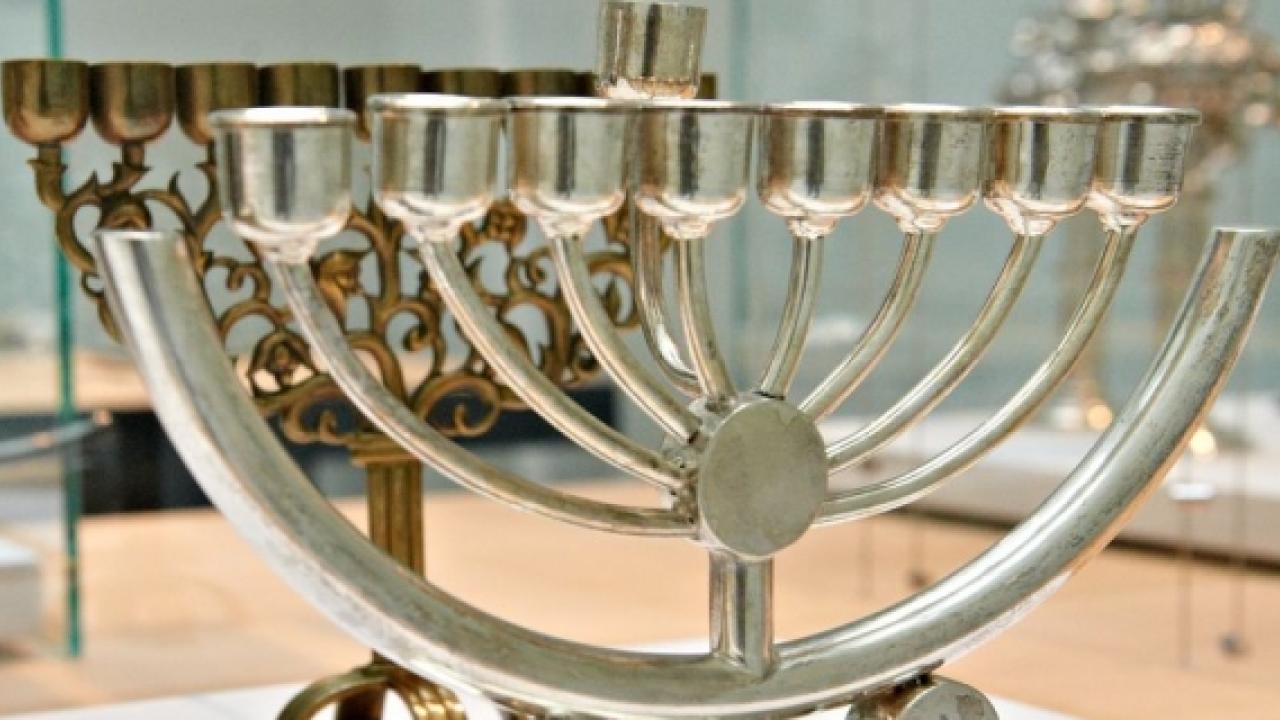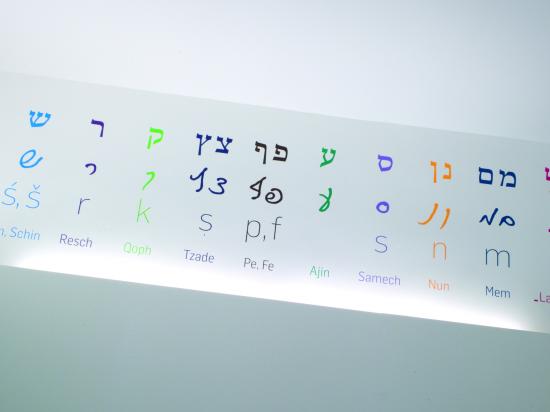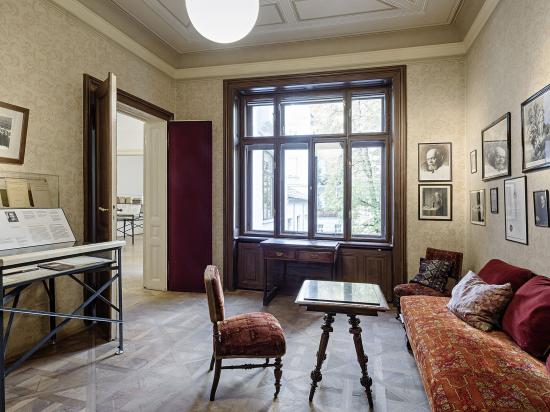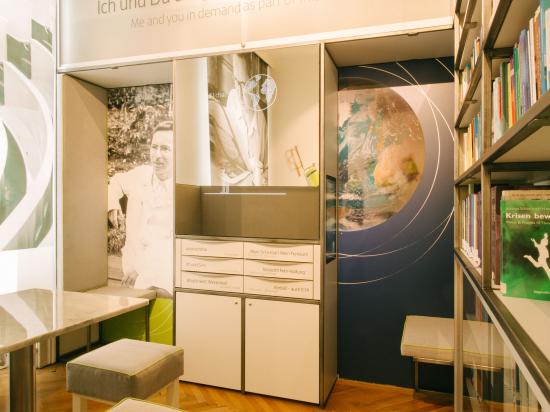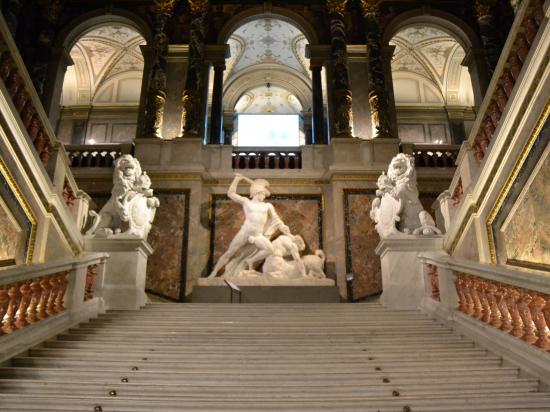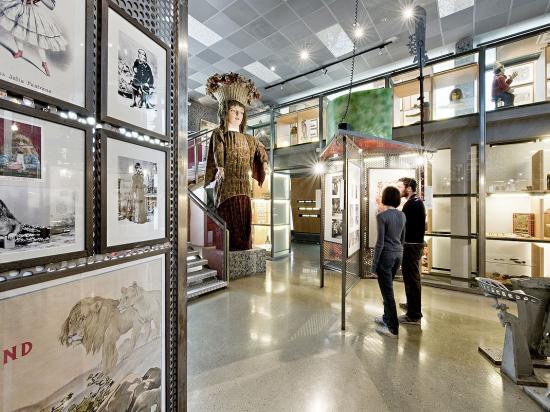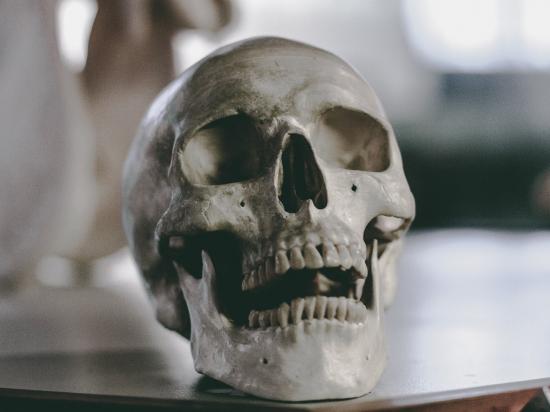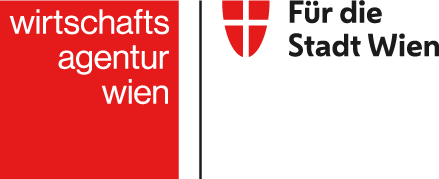Jewish Vienna
Many years were still to pass until the establishment of the jewish neighbourhood in the 2nd district. And those years are characterized by hostility against the jewish community.
Medieval Vienna © Jewish Museum Vienna
Banishment and hate campaigns
The first jewish ghetto existed in the 13th century around today‛s Judenplatz. The jewish population was tolerated but neither allowed to hold acres nor to practize skilled crafts and trades. Therefore most of the families were tradespeople, especially the credit-business was profitable (catchword interest rates) but a cause for animosity as well. 1420/21 the anti-Semitic climate reached its first peak in a tragical pogrom. The viennese Jews were banished or killed, some of them commited collective suicide – they burned themselfes inside their synagogue respectively together with the building. Until the year 1624 the prohibition for setteling down in Vienna persisted for Jews. There were exceptional permissions consistently but the everyday life was not so pleasant for the hate campains continued. In the year 1670 – under Emperor Leopold I. – there was a banishment again. At the same time the neighbourhood of today‛s 2nd district was renamed Leopoldstadt (instead of „Unterer Werd‟). Actually this is where the center of jewish cultur today is located.
Improvement of life conditions
The turkish wars weakend the state finances and so the Austrian officials invited jewish creditors to Vienna in the year 1683. In 1782 Emperor Joseph II. finally passed his so called patent of tolerance (Toleranzpatent) which included the release from many confinements and allowed the immigration of jews. 1812, under Emperor Kaiser Franz I., the opening of a school and a temple in Seitenstettengasse (1st district) were permitted. Single jewish citizens reached ennoblement in these days. Some jewish women presented themselves as hosts of the so called „literary salons‟ – for example Fanny von Arnstein‛s salon was very popular and influental.
The Revolution 1848 was significant for the jewish community the more so as it was highly involved in the turn of the events. The jewish doctor Adolf Fischhof expressed the essential claims of the revolution on 13th March 1848 in front of the Landhaus in Herrengasse. The main demands were freedom of religion and press, freedom of teaching and learning. With his speech the foundation for the new constitution of 1867 was laid. Furthermore the changes made the founding of the Israelitische Kultusgemeinde (Jewish Community Vienna/IKG) possible and the way to aristocracy and to haute bourgeosie was paved. Lots of the jewish families contributed in parts to the cultural upswing of Vienna in the second half of the 19th century. They identified themselves by trend with the „House of Habsburg‟, the liberal zeitgeist and the so called „German cultural treasure‟ while preserving their own jewish identity.
Under adverse conditions
Karl Lueger, Viennas mayor from 1897–1910, was indeed not the right one to create a relaxed climate for he represented a religious anti-Semitism. While the emancipation of the working class began, Theodor Herzl wrote his visionary book „Der Judenstaat‟ (The Jewish State) thus founding political Zionism. 1918 the republic was declared and soon after, in May 1919, the first democratic elections for men and women took place: The Social Democrates gained the majority, mayor Jakob Reumann became a symbol of the „Red Vienna‟ which was characterized by a comprehensive reform policy. The focus was on health, housing and social issues, the progress remarkable. This era ended with the beginning of the Ständestaat (Austro-Fascist „Corporate State‟) in 1934. The Social Democrates were thrown out of the Town Hall violently by representatives of the Corporate State. Despite the political confusion and the following adverse climatic events the jews occupied a significant position in the First Republic. Writer, theater people, musicians, artists and doctors came from jewish families – a number of austrian Nobel laureates is of jewish origin. Their sucess was followed by envy. And this envy was used for the anti-Semitic propaganda.
Anti-Semitism and Holocaust
In the 1930s the anti-Semitism on a political and religious level increased noticeably. The ideology of Adolf Hitler fell on fertile ground – the invasion of the nazis finally initiates a suffering without comparison. It began with serious violent riots against the jewish population, public humiliation, aggression and ill-treating. With the Nuremberg Laws of 1935 the racial fanatisicm reached a first tragical peak. From now on almost everything was forbidden for the jews: Jewish women had to bear the name „Sara‟, men the name „Israel‟, in addition they had to wear a yellow star on their jackets. Many families were expropriated, their shops „aryanized‟. During the night of the 9th to the 10th of November 1938 synagogues, temples and shops were plundered and damaged. Only the Stadttempel (City Temple) in Seitenstettengasse remained. People were kicked, battered, killed. Hitlers arranged „spontaneous release of the public anger (Volkszorn)‟ was a huge success for the nazis. Many Viennese participated, many turned away.
The once flourishing jewish community was almost entirely destroyed by the National Socialists. 130.000 of 206.000 jewish people were leaving Vienna until May 1939. 1941 the racist madness reached another peak in form of mass deportations. More than 65.000 people were brought to concentration camps where they died; they are part of six million victims of Hitlers regime, as well as estimated 4.000–5.000 people who were assassinated because of there sexual orientation.
After the War
Many people who helped to shape the identity of Vienna left the city – and the country – at an early stage. Among the many unknown persons who left the Leopoldstadt are some prominent personalities like Sigmund Freud and his wife Anna. After the war the official Austria saw itself as the first victim of the nazis – the government was not really interested to support the displaced persons at their return home. This was no big surprise at all, for the gaps they left have already been filled: University chairs were occupied, shops had new „owners‟, positions were assigned. Apartments and houses were occupied by others as well, in many cases including furniture, art objects and personal items. The issue of restitution was postponed – even today there are many unsolved cases and many families who got no compensation and not even got back their legitimate possessions.
Indeed another political assassination had to accur to initiate a process of rethinking: A university professor Taras Borodajkewycz attained dubious fame for his lectures where he shared and spreaded his anti-Semitic ideas. While the right-wing student groups supported him, he was criticized by the left-wing (by the way in was the current Austrian Federal President Heinz Fischer who made the Borodajkewycz-scandal public as a student!). In 1965 there were demonstrations for and against this professor. During a protest the communist and former concentration camp inmate Ernst Kirchweger was beaten up by a neo-Nazi – some days later he died in hospital. The memorial service was held at Heldenplatz – 25.000 people anticipated, including the entire government. The rethinking and the elimination of taboos concerning the recent political past continued in the student movement in 1968/69, while the government took some more years to produce a professional opinion: It was only in the beginning of the 1990s that Federal Chancellor Franz Vranitzky spoke about responsibility and faults.
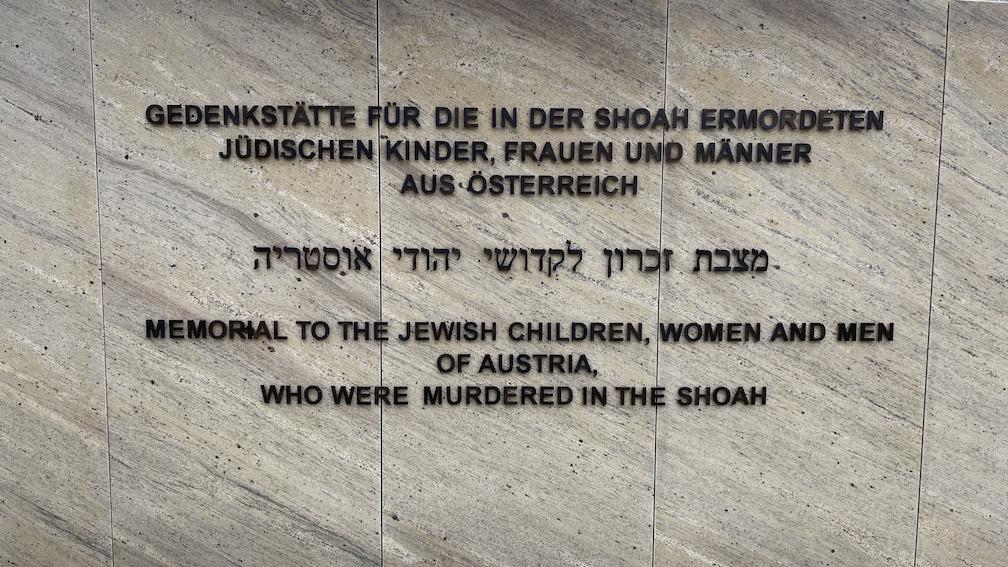
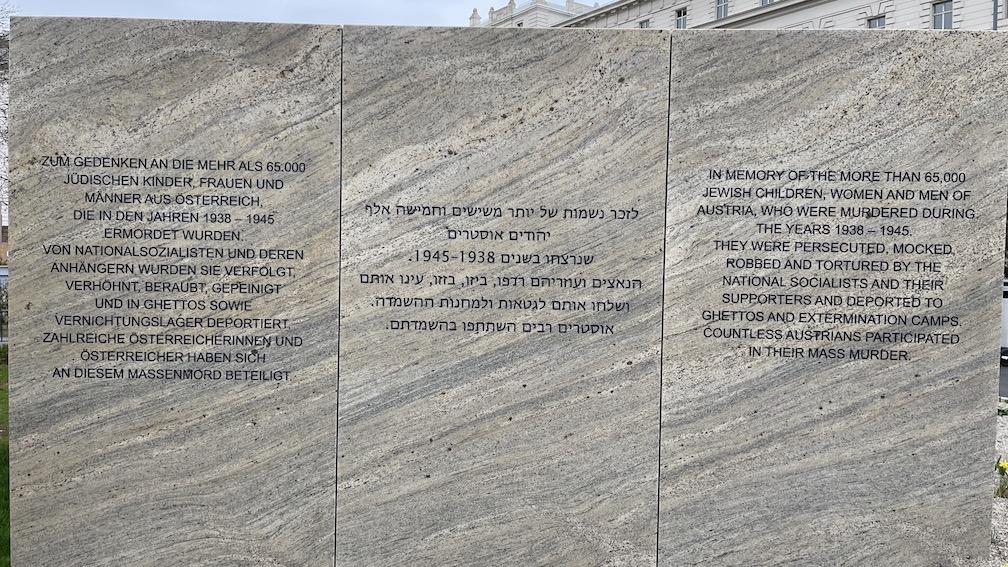
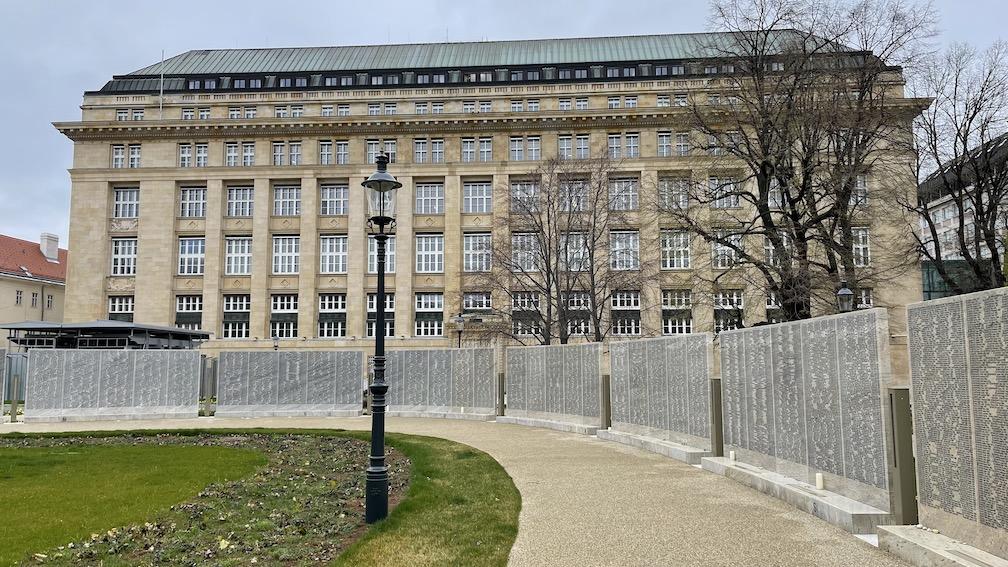
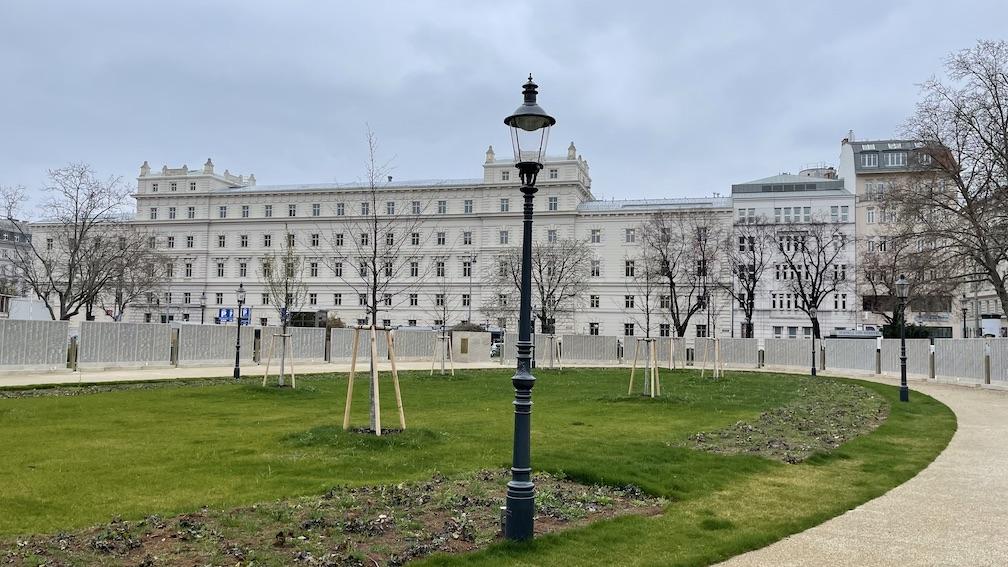
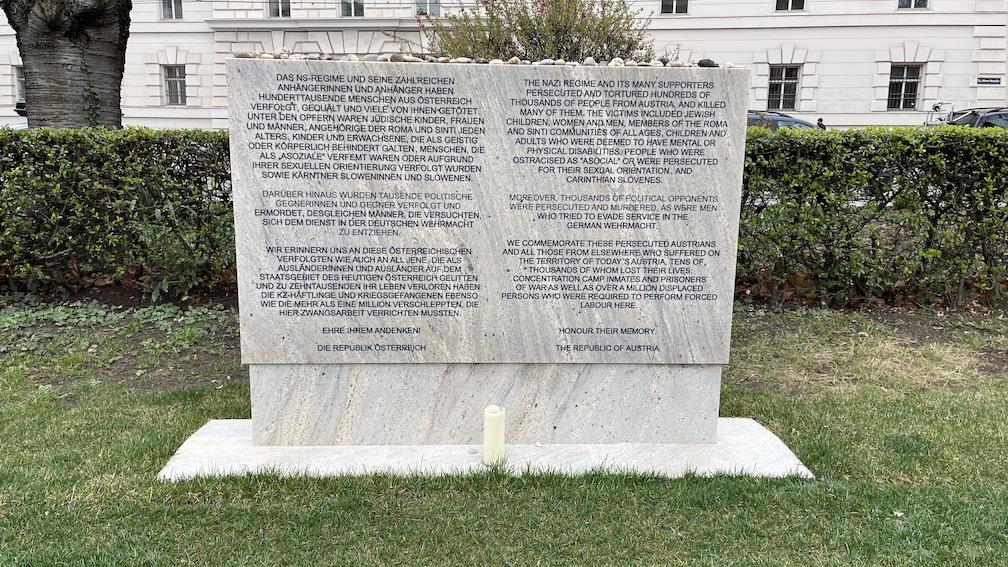
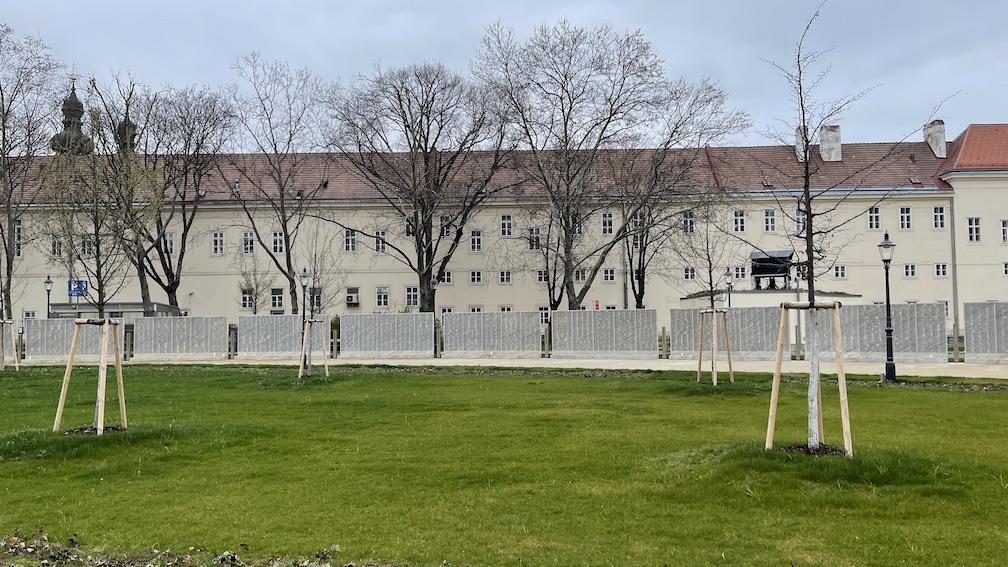
Today’s Jewish Vienna
The jewish community appears quite active nowadays, despite the tragic conditions of 1945 it developed very self-confidently as Israelitische Kultusgemeinde (Jewish Community Vienna/IKG). Back then hardly any legacy of jewish culture had survived in Vienna, with the exception of the City Temple, whose interior had been destroyed as well. Synagogues and cemetaries were ruined, the community counted only between 1.000 and 1.500 members. Today the strong Jewish Community Vienna cares for matters of culture and rites, security and education, public relations, social and religious issues.
Presence, not past
If you are more into the presence than into the past you could stroll through the 2nd district, the so called Leopoldstadt. This area was called „Judenstadt‟ (jewish quarter) in the 17th century and was home to the people who were not welcome inside Vienna. Today the Leopoldstadt is not located outside anymore but almost downtown (for the bounaries of the city got wider) and still the percentage of orthodox jews is relatively high. The orthodox families cannot be overlooked – especially on sabbath ladies with wigs or headscarf, gentlemen with broad-brimmed hats, beards and long temple curls shape the image of the quarter. In addition the infrastructure with kosher shops, synagogue and jewish schools is special.
The „Path of Remembrance‟ is leading along the „Stones of Remembrance‟ and through this very particular area between Hollandstraße and Tempelgasse. The ones who follow the path are asked to stop at 17 important places where they find information boards concerning history and daily life of the jewish community. 96 „Stones of Remembrance‟ were planted for the refugees and expellees of Vienna – you can find the path on your own initiative with a downloaded info folder (http://www.erinnern.at/bundeslaender/oesterreich/gedaechtnisorte-gedenkstaetten/katalog/weg_der_erinnerung; guided tours are possible) or be part of the tour that starts every friday at 13.30 pm at Schwedenplatz (meet the guide at Schwedenplatz / Rotenturmstraße / McDonalds; info@viennawalks.com).
Remember your belly now? A good choice would be one of the cafés at Karmeliter Market or one of the kosher restaurants, for example Simchas (Taborstr. 47, 2nd district) with Bukharan/Uzbek cuisine. Bahur Tov (Taborstraße 19, 2nd district) provides jewish-asian-international dishes, in Pizzaria Milk & Honey (Kleine Sperlgasse 7, 2nd district) you get … what? Right. But it‛s kosher. King David at Volkert Market (Volkertplatz, 2nd district) – a bit further towards the prater – is a whole empire, consisting of kosher butcher shop, bakery and a pita-falafel-food-stand.
Source: Vienna Tourism Board
